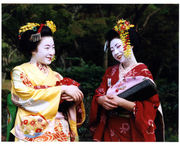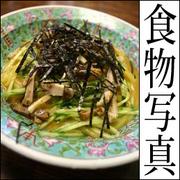通訳案内士(通訳ガイド)試験受験対策<2006年度英語第2次試験の模範解答例(その2)>
現行の通訳案内士試験は、2006年4月に国交省より発表されました<通訳案内士試験ガイドライン>に沿って出題、実施されています。
http://
今年、第2次試験を受験する受験者は、2006年度から2011年度までの試験内容(時間帯別問題群)をよく知っておくことが重要です。
本日は、2006年度英語第2次試験の下記時間帯別問題群と模範解答例を提示させていただきます。
・問題群(3)[15:00〜17:00]
・問題群(4)[17:00〜19:00]
毎年、同じような質問が繰り返し出題されています。受験者は、自分が言いやすい文型、内容に組み替えて準備しておくことが重要です。
英語以外の外国語での受験者は、その外国語に置き換えて準備してください。
━━━━━━━━━━━━━━━━━━━━━━
<外国語の試験問題用紙のコピー>送付のお願い
━━━━━━━━━━━━━━━━━━━━━━
下記の外国語の試験問題用紙(またはコピー)をお送りいただける方を探しています。(出題傾向の分析のため)
●タイ語
・鉛筆の記入があるものは、綺麗に消してからコピーを取ってください。
・ご協力いただける方は、下記宛てにご連絡をお願いします。問題用紙の送付先などをお知らせします。
・御礼としまして、薄謝をご提供させていただきます。
mailto:info@hello.ac
━━━━━━━━━━━━━━━━━━━━━━━━━━━━
2006年度英語第2次試験の時間帯別問題群(3)(4)と模範解答例
━━━━━━━━━━━━━━━━━━━━━━━━━━━━
●問題群(3)[15:00〜17:00]
(1)日本で観光するのに、どこを薦めるか。
Where would you recommend I visit for sightseeing in Japan?
I would recommend Hakone. Hakone is a popular all-year tourist site because of its many hot-spring resorts, beautiful scenery and comfortable climate. Its easy access from Tokyo, views of Mt. Fuji, and the plentiful facilities in the district also add to its attraction.
(2)日本の夏の魅力は何か。
What is the attraction of Japanese summer?
If you are interested in outdoor activities, you can enjoy swimming in the sea or climbing mountains. You can also enjoy viewing fireworks displays and Bon dances, throughout Japan in summer.
(3)日本史における最も重要な出来事は何か。
What is the most important event in Japanese history?
It was the Meiji Restoration. It is narrowly defined to refer to the 1867 coup d’état that overthrew the Tokugawa shogunate, but it more broadly marked the beginning of Japan’s modernization. Following the opening of the country to the West in the mid-19th century, Japan had an influx of various foreign things from Western technology to the military draft system to democracy. Japan abolished its feudalistic shogunate system and developed into a constitutional monarchy.
(4)日本史に興味があるのだが、どの博物館を訪れたらよいのか。
I am interested in Japanese history. Which museum would you recommend I visit?
If you are traveling in the Tokyo metropolitan area, I would recommend two museums. One is Edo-Tokyo Museum in Sumida Ward. There you can get a brief overview of Tokyo’s 400-year history through various exhibits. The other is Kanagawa Prefectural Museum of Cultural History in Naka Ward, Yokohama. One of the museum buildings is a former bank built in the Meiji period, and its very modern architecture is worth seeing.
(5)畳に長時間座ることができないが、どうすればよいのか。
I can’t sit on tatami mats for a long time. What should I do?
When we need to sit in the “seiza” position (that is, to sit on our heels with our back straight) on tatami for a long time, it’s natural for our feet or legs to go numb. The trick to reduce your numbness is that you slightly cross your big toes, relax your elbows and shoulders, and occasionally switch the upper and lower positions of the big toes. But if it really gets unbearable, you can ask for permission to be excused from such a position and sit cross-legged.
(6)パスポートをなくしてしまったが、どうすればよいのか。
I lost my passport. What should I do?
First, you should report it to the police. If the police weren’t able to find it, then you should get in touch with your embassy or consulate, and apply for the reissue of your passport. Most likely, you can have your passport reissued in two or three weeks.
(7)今日多くの日本人はとてもよく働くが、なぜ彼らは勤勉なのか。
Today many Japanese work very hard. Why do they work so hard?
It is because of the Japanese work ethic. Japanese place intrinsic value on work itself, and don’t necessarily consider work as something to be exchanged with money. That’s why Japanese generally do a lot of overtime work, even when they’re not paid for it. However, this work ethic is changing among the young people today, many of whom place equal importance on their private lives and their work.
(8)日本で最も人気のあるスポーツは何か。
What is the most popular sport in Japan?
By far the most popular are baseball and soccer. Among amateur baseball events, the high-school baseball championship games are the most popular. They are held each spring and summer, and broadcast nationwide. Japanese professional baseball attracts fans of all ages. Soccer shares the same popularity as baseball. It is particularly popular among the young.
(9)〔日本語での質問〕(次の三つのうち一つを質問された)
?あなたは、どのような通訳ガイドになりたいですか。(←圧倒的多数)
?通訳ガイドをするときに、気をつけなければならないことは何ですか。
?通訳ガイドにとって、一番大切なことは何だと思いますか。
●問題群(4)[17:00〜19:00]
(1)富士山を眺めるにはどこが一番よい場所だと思うか。
Where do you think is the best spot for viewing Mt. Fuji?
Probably it is Lake Kawaguchi on the northern foot of Mt. Fuji. The lake is noted for its fine view of Mt. Fuji from its northern shore, where the majestic peak may be seen both in its natural form and as an inverted image on the surface of the placid lake waters.
(2)皇居はいつでも一般公開されているのか。
Is the Imperial Palace always open to the public?
No, it is open only on January 2 for the New Year Greetings and on December 23 for the Emperor’s Birthday. On those days, access is allowed as far as Chowaden Hall, where the Imperial Couple and their family can be seen.
(3)日本の気候はどんなものか。日本にはいくつの季節があるのか。
What is the climate of Japan like? How many seasons do you have in Japan?
There are four distinct seasons in Japan — spring, summer, fall and winter. There is also a rainy season between spring and summer. Japan’s climate is influenced by summer and winter monsoons, ocean currents and topographical features.
(4)日本人はどういう機会に寺に行くのか。
On what occasions do Japanese go to Buddhist temples?
Very few Japanese go to temples except for funerals or hatsumode, the first visit paid on New Year holidays. However, temples in Kyoto and Nara, such as Kiyomizu Temple and Todai-ji Temple, are always crowded with tourists.
(5)箸を使えないが、どうすればよいのか。
I can’t use chopsticks. What should I do?
Don’t worry. Most restaurants or dining rooms of hotels you may stay at have knives and forks available for those who are not accustomed to using chopsticks.
(6)日本人はいつから洋服を着るようになったのか。
When did Japanese start wearing Western-style clothes?
The Japanese started wearing Western-style clothes in the Meiji period (1868-1912). The Meiji government first adopted a European-style military uniform, and decided that officials, mailmen, and railroad workers should all wear Western-style clothes. This was because they felt it necessary to quickly transform Japan into a modern state. This expedited the spread of Western-style clothes among ordinary people as well.
(7)タバコを吸いたいのだが、どこで吸っても良いのか。
I would like to smoke, but can I smoke anywhere?
In most public places you can’t smoke. Places where you can smoke are very limited like the “smoking corner” of railway stations or the smoking area of restaurants. In some streets of large cities you can’t smoke while walking. If you are caught smoking, you will be fined.
(8)日本の主たる産業は何か。また、それはどこにあるのか。
What is the major industry of Japan, and where is it located?
It is the automotive industry, and its largest factories are located in Toyota City, Aichi Prefecture, in central Japan. Toyota Motors has become the biggest car company in the world, surpassing General Motors.
(9)〔日本語での質問〕(次の三つのうち一つを質問された)
?あなたは、どのような通訳ガイドになりたいですか。(←圧倒的多数)
?通訳ガイドをするときに、気をつけなければならないことは何ですか。
?通訳ガイドにとって、一番大切なことは何だと思いますか。
現行の通訳案内士試験は、2006年4月に国交省より発表されました<通訳案内士試験ガイドライン>に沿って出題、実施されています。
http://
今年、第2次試験を受験する受験者は、2006年度から2011年度までの試験内容(時間帯別問題群)をよく知っておくことが重要です。
本日は、2006年度英語第2次試験の下記時間帯別問題群と模範解答例を提示させていただきます。
・問題群(3)[15:00〜17:00]
・問題群(4)[17:00〜19:00]
毎年、同じような質問が繰り返し出題されています。受験者は、自分が言いやすい文型、内容に組み替えて準備しておくことが重要です。
英語以外の外国語での受験者は、その外国語に置き換えて準備してください。
━━━━━━━━━━━━━━━━━━━━━━
<外国語の試験問題用紙のコピー>送付のお願い
━━━━━━━━━━━━━━━━━━━━━━
下記の外国語の試験問題用紙(またはコピー)をお送りいただける方を探しています。(出題傾向の分析のため)
●タイ語
・鉛筆の記入があるものは、綺麗に消してからコピーを取ってください。
・ご協力いただける方は、下記宛てにご連絡をお願いします。問題用紙の送付先などをお知らせします。
・御礼としまして、薄謝をご提供させていただきます。
mailto:info@hello.ac
━━━━━━━━━━━━━━━━━━━━━━━━━━━━
2006年度英語第2次試験の時間帯別問題群(3)(4)と模範解答例
━━━━━━━━━━━━━━━━━━━━━━━━━━━━
●問題群(3)[15:00〜17:00]
(1)日本で観光するのに、どこを薦めるか。
Where would you recommend I visit for sightseeing in Japan?
I would recommend Hakone. Hakone is a popular all-year tourist site because of its many hot-spring resorts, beautiful scenery and comfortable climate. Its easy access from Tokyo, views of Mt. Fuji, and the plentiful facilities in the district also add to its attraction.
(2)日本の夏の魅力は何か。
What is the attraction of Japanese summer?
If you are interested in outdoor activities, you can enjoy swimming in the sea or climbing mountains. You can also enjoy viewing fireworks displays and Bon dances, throughout Japan in summer.
(3)日本史における最も重要な出来事は何か。
What is the most important event in Japanese history?
It was the Meiji Restoration. It is narrowly defined to refer to the 1867 coup d’état that overthrew the Tokugawa shogunate, but it more broadly marked the beginning of Japan’s modernization. Following the opening of the country to the West in the mid-19th century, Japan had an influx of various foreign things from Western technology to the military draft system to democracy. Japan abolished its feudalistic shogunate system and developed into a constitutional monarchy.
(4)日本史に興味があるのだが、どの博物館を訪れたらよいのか。
I am interested in Japanese history. Which museum would you recommend I visit?
If you are traveling in the Tokyo metropolitan area, I would recommend two museums. One is Edo-Tokyo Museum in Sumida Ward. There you can get a brief overview of Tokyo’s 400-year history through various exhibits. The other is Kanagawa Prefectural Museum of Cultural History in Naka Ward, Yokohama. One of the museum buildings is a former bank built in the Meiji period, and its very modern architecture is worth seeing.
(5)畳に長時間座ることができないが、どうすればよいのか。
I can’t sit on tatami mats for a long time. What should I do?
When we need to sit in the “seiza” position (that is, to sit on our heels with our back straight) on tatami for a long time, it’s natural for our feet or legs to go numb. The trick to reduce your numbness is that you slightly cross your big toes, relax your elbows and shoulders, and occasionally switch the upper and lower positions of the big toes. But if it really gets unbearable, you can ask for permission to be excused from such a position and sit cross-legged.
(6)パスポートをなくしてしまったが、どうすればよいのか。
I lost my passport. What should I do?
First, you should report it to the police. If the police weren’t able to find it, then you should get in touch with your embassy or consulate, and apply for the reissue of your passport. Most likely, you can have your passport reissued in two or three weeks.
(7)今日多くの日本人はとてもよく働くが、なぜ彼らは勤勉なのか。
Today many Japanese work very hard. Why do they work so hard?
It is because of the Japanese work ethic. Japanese place intrinsic value on work itself, and don’t necessarily consider work as something to be exchanged with money. That’s why Japanese generally do a lot of overtime work, even when they’re not paid for it. However, this work ethic is changing among the young people today, many of whom place equal importance on their private lives and their work.
(8)日本で最も人気のあるスポーツは何か。
What is the most popular sport in Japan?
By far the most popular are baseball and soccer. Among amateur baseball events, the high-school baseball championship games are the most popular. They are held each spring and summer, and broadcast nationwide. Japanese professional baseball attracts fans of all ages. Soccer shares the same popularity as baseball. It is particularly popular among the young.
(9)〔日本語での質問〕(次の三つのうち一つを質問された)
?あなたは、どのような通訳ガイドになりたいですか。(←圧倒的多数)
?通訳ガイドをするときに、気をつけなければならないことは何ですか。
?通訳ガイドにとって、一番大切なことは何だと思いますか。
●問題群(4)[17:00〜19:00]
(1)富士山を眺めるにはどこが一番よい場所だと思うか。
Where do you think is the best spot for viewing Mt. Fuji?
Probably it is Lake Kawaguchi on the northern foot of Mt. Fuji. The lake is noted for its fine view of Mt. Fuji from its northern shore, where the majestic peak may be seen both in its natural form and as an inverted image on the surface of the placid lake waters.
(2)皇居はいつでも一般公開されているのか。
Is the Imperial Palace always open to the public?
No, it is open only on January 2 for the New Year Greetings and on December 23 for the Emperor’s Birthday. On those days, access is allowed as far as Chowaden Hall, where the Imperial Couple and their family can be seen.
(3)日本の気候はどんなものか。日本にはいくつの季節があるのか。
What is the climate of Japan like? How many seasons do you have in Japan?
There are four distinct seasons in Japan — spring, summer, fall and winter. There is also a rainy season between spring and summer. Japan’s climate is influenced by summer and winter monsoons, ocean currents and topographical features.
(4)日本人はどういう機会に寺に行くのか。
On what occasions do Japanese go to Buddhist temples?
Very few Japanese go to temples except for funerals or hatsumode, the first visit paid on New Year holidays. However, temples in Kyoto and Nara, such as Kiyomizu Temple and Todai-ji Temple, are always crowded with tourists.
(5)箸を使えないが、どうすればよいのか。
I can’t use chopsticks. What should I do?
Don’t worry. Most restaurants or dining rooms of hotels you may stay at have knives and forks available for those who are not accustomed to using chopsticks.
(6)日本人はいつから洋服を着るようになったのか。
When did Japanese start wearing Western-style clothes?
The Japanese started wearing Western-style clothes in the Meiji period (1868-1912). The Meiji government first adopted a European-style military uniform, and decided that officials, mailmen, and railroad workers should all wear Western-style clothes. This was because they felt it necessary to quickly transform Japan into a modern state. This expedited the spread of Western-style clothes among ordinary people as well.
(7)タバコを吸いたいのだが、どこで吸っても良いのか。
I would like to smoke, but can I smoke anywhere?
In most public places you can’t smoke. Places where you can smoke are very limited like the “smoking corner” of railway stations or the smoking area of restaurants. In some streets of large cities you can’t smoke while walking. If you are caught smoking, you will be fined.
(8)日本の主たる産業は何か。また、それはどこにあるのか。
What is the major industry of Japan, and where is it located?
It is the automotive industry, and its largest factories are located in Toyota City, Aichi Prefecture, in central Japan. Toyota Motors has become the biggest car company in the world, surpassing General Motors.
(9)〔日本語での質問〕(次の三つのうち一つを質問された)
?あなたは、どのような通訳ガイドになりたいですか。(←圧倒的多数)
?通訳ガイドをするときに、気をつけなければならないことは何ですか。
?通訳ガイドにとって、一番大切なことは何だと思いますか。
|
|
|
|
|
|
|
|
通訳案内士は民間外交官! 更新情報
-
最新のアンケート
通訳案内士は民間外交官!のメンバーはこんなコミュニティにも参加しています
人気コミュニティランキング
- 1位
- 大人のmixi【おとミク】
- 6475人
- 2位
- 食べ物写真をつい撮ってしまう人
- 19252人
- 3位
- 写真を撮るのが好き
- 208306人
























